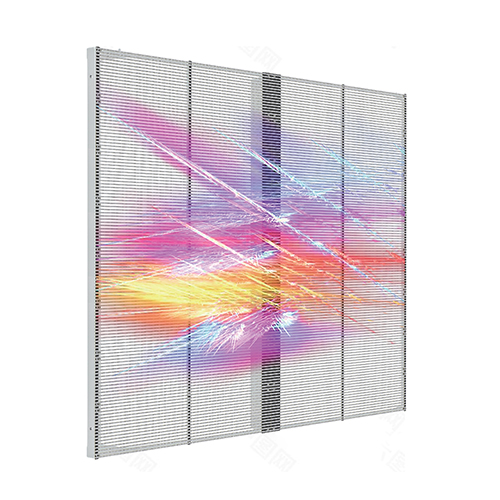NEWS
New Products
What is the Difference Between Indoor and Outdoor LED Screens?
2024-11-04LED screens have become an essential part of modern advertising, entertainment, and information display systems. They are used across various environments, including shopping malls, sports arenas, and outdoor billboards. However, not all LED screens are the same. There are significant differences between indoor and outdoor LED screens, each designed to meet specific functional requirements depending on their usage environment. Understanding these differences is crucial when choosing the right LED display for your needs.
1. Brightness Levels
One of the most noticeable differences between indoor and outdoor LED screens is their brightness. Outdoor LED screens are exposed to direct sunlight and must compete with natural light, so they are designed with much higher brightness levels, often exceeding 5000 nits (a unit of brightness). This ensures that the content remains visible and clear, even on sunny days.
In contrast, indoor LED screens don’t need to be as bright because they operate in controlled lighting environments. Indoor screens typically range between 500 to 1500 nits, which is sufficient for areas such as conference rooms, retail stores, and exhibition halls without causing glare or discomfort to viewers.
2. Weather Resistance
Outdoor LED screens are built to withstand the elements. They are designed with waterproof and dustproof enclosures, usually meeting IP65 or higher standards, to protect the electronics from rain, snow, dust, and extreme temperatures. This makes them durable and capable of maintaining high performance in diverse weather conditions.
On the other hand, indoor LED screens are not exposed to such harsh environmental factors, so they don't require weatherproofing. This allows for more flexibility in design, making them lighter and easier to install in places like office buildings, shopping centers, and museums.
3. Viewing Distance and Pixel Pitch
The pixel pitch—the distance between the center of two adjacent pixels—varies significantly between indoor and outdoor LED screens. Indoor LED screens generally have a smaller pixel pitch, such as 1.2mm to 4mm, ensuring high resolution and clear visuals even when viewed up close. This is important for environments like conference halls or exhibition spaces, where viewers are often near the screen.
In contrast, outdoor LED screens usually have a larger pixel pitch, ranging from 5mm to 10mm or more. Since they are often viewed from a greater distance, such as on highways or at large events, the resolution can afford to be lower without affecting the visual quality from afar. The larger pixel pitch also helps reduce costs for larger displays while maintaining clear visibility at longer distances.
4. Installation and Size Flexibility
Outdoor LED screens are usually large-scale installations, such as billboards, stadium displays, or building facades. These installations require robust support structures to ensure stability and safety under different weather conditions. The size of outdoor screens is often much larger, making them ideal for capturing attention from a distance.
Indoor LED screens, by comparison, come in a wide range of sizes and are typically more flexible in terms of installation. They can be seamlessly integrated into smaller spaces like retail stores, meeting rooms, or entertainment venues. Their modular design allows for creative shapes and configurations, such as curved or 3D screens, without needing the heavy-duty structures required for outdoor screens.
5. Maintenance and Durability
The durability of outdoor LED screens is a critical factor. They are built to endure prolonged exposure to environmental elements like UV radiation, which can degrade other types of displays over time. Additionally, outdoor screens often come with enhanced cooling systems to prevent overheating under direct sunlight.
In contrast, indoor LED screens don’t face such environmental challenges, meaning they generally have lower maintenance requirements. Since they are in more controlled environments, they experience less wear and tear, making them easier and cheaper to maintain.
6. Cost Differences
Given the additional requirements for outdoor LED screens—such as weatherproofing, higher brightness levels, and more robust structures—they tend to be more expensive than indoor screens. The costs can increase depending on the size, pixel pitch, and customization options needed for outdoor installations.
Indoor LED screens, with their lower brightness needs and lack of environmental protection, are generally more cost-effective. This makes them a more accessible option for businesses and venues that don’t require extreme durability or large-scale installations.
7. Applications
The applications of indoor and outdoor LED screens further highlight their differences:
- Indoor LED screens are often used for corporate presentations, digital signage in shopping malls, product displays, entertainment venues, and interactive exhibits in museums or galleries. These screens focus on delivering high-quality visuals in close-range viewing settings.
- Outdoor LED screens are primarily used for advertising on highways, in public squares, at stadiums, and for large-scale events. These screens are designed to attract attention from far away and endure long-term exposure to natural elements.
In conclusion, the key differences between indoor and outdoor LED screens stem from their intended use and operating environments. Indoor screens emphasize high resolution, close-range viewing, and flexibility in design, while outdoor screens focus on durability, weather resistance, and brightness for large-scale, long-distance viewing. Understanding these distinctions is crucial for selecting the right type of LED screen to meet your specific needs, whether for indoor displays in a controlled environment or outdoor installations exposed to the elements.






